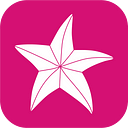Learn on SubDAO — Important Tools for Efficient DAO Design and Management

Like The ICO Boom in 2017 and the NFT Craze in 2021, Decentralized Autonomous Organizations (DAOs) have become increasingly popular in 2022. According to DeepDAO, there are currently about 5,000 Decentralized Autonomous Organizations worth over $11 billion (despite the massive dip in value due to the bear season). DAOs gained popularity in 2022 due to their transparency, organizational scalability, and, most importantly, on-chain governance.
However, due to the multifaceted usage of DAOs, several tools are needed to ensure that these organizations function optimally in facilitating widespread contribution and decentralized decision-making by all DAO members; transparent cash flow monitoring is also a needed tool to ensure fidelity in spending of DAO funds and efficient treasury management. All of these must be done without compromising the decentralized nature of the organizations, the scalability of DAO operations, as well as community member and fund security.
Below are some highlighted tools that bring DAO management closer to perfect as we aim for absolute decentralization in Web 3.0 and the future of the internet.
Treasury Management: DAO treasury management is frequently carried out via multi-signature wallets, where funds transfer must be validated by several community members. This is to ensure that a single person doesn’t have absolute access to the DAO funds. In smaller DAO communities, each member may have their unique private key for the multi-signature; however, in much larger communities, where waiting for all members to sign off on a transaction may be time-consuming, the DAO members could set up a treasury committee, that will each hold private keys to the multisig wallet. For example, the Gnosis Safe has established itself as the most popular multisig option for Ethereum-based DAOs; some other DAO protocols also facilitate treasury management across other blockchain networks; for example, SubDAO facilitates multi-chain treasury management that directly triggers funds transfers via multi-sig voting.
On-Chain Governance: DAO decision-making is primarily facilitated by developing proposals and voting on these proposals. In order to vote on proposals, members are required to spend some DAO tokens, which are usually issued based on their contribution to the DAO. Click here to see some of the popular voting mechanisms used in DAO voting.
All the existing voting systems are championed by one DAO protocol or the other; for example:
- Compound, Curve, and Kleros use the Token-based quorum voting mechanism.
- DAOstack created the Holographic Consensus used by several protocols.
- MolochDAO also created the Permissioned Relative Majority voting system.
- Aragon and some other DAO protocols spearhead the use of the unique Conviction voting system
- Multisig voting is championed by Gnosis
Off-chain Communication: More than just voting on proposals, it is important for communities to deliberate on proposals and discuss them. This allows room for greater community interaction and allows proponents a chance to convince DAO members who are on the fence to make a decision. Telegram and Discord are the most popular DAO tools used for community interaction due to their in-built tools; also, as open-source applications, they are customizable via Telegram and Discord bots; hence, several parts of off-chain management and communication can be automated.
Proof of Attendance Protocol (POAP): Because the blockchain facilitates immutable recording of data in ledgers, DAO member participation can be tracked and managed within the DAO to allow DAO members to accumulate their actions to receive rewards or to build an on-chain resume. The POAP records these data in the form of NFTs, such that each participant can show others a full compilation of their activities in a compressed and organized manner. All these help to facilitate reputation building in the decentralized world. Protocols that champion this include POAP.xyz , Rabbithole.gg, and Mirror.xyz
Grants: Like Traditional organizations, Decentralized Autonomous Organizations may need external funding to expand and scale for a mass audience. Of course, in the early stage of DAO creation, most of this funding was gotten from traditional companies; however, as DAOs begin to expand, DAO grant protocols now exist, where wealthy individuals invest their funds in DAO protocols with interesting projects; this helps the entire DAO ecosystem to grow, as projects with poor funding can get funded via grants.
Unlike centralized bodies, where a CEO may be in charge of awarding grants, DAO grants are different. First, a prospective organization to be funded submits a proposal to the awarding body, where all members vote on whether to fund the project or not. Suppose a consensus is reached on funding the applicant DAO. In that case, the DAO awarding the grant will reach out to the treasury and disburse funds to the awardees while keeping tabs on their progress.
Grants are important for DAOs; they allow small projects to scale for a larger audience, facilitate collaboration, and give complex projects a landing ground. Gitcoin is a DAO tool that facilitates grant issuing and application.
There are dozens of tools that seek to make DAO integration as seamless as possible. More than just for on-chain governance of blockchain projects, these tools seek to make DAOs a mainstream application for real-life applications in the world of Web 3.0.
About SubDAO
SubDAO is a multi-chain DAO protocol. It allows any decentralized organization to swiftly create and manage DAOs. We are committed to serving as a Web3.0 entry by providing blockchain-based digital agreement signing, DAO social networking, asset management, and other tools and services.
The founding team of SubDAO is composed of the former Technical Team leader of the IBM Group and many early well-known developers from Polkadot. SubDAO has completed multi-million dollars financing from dozens of institutions including Hypersphere, Huobi Ventures, OKEx Blockdream Fund, as well as investment by Messari founder Ryan Selkis.
Follow SubDAO
Twitter:https://twitter.com/subdao_network
Telegram:https://t.me/subdao
Medium:https://medium.com/@subdao
Github:https://github.com/SubDAO-Network/
Website:https://www.subdao.network
Discord:https://discord.gg/Z8jtYqWbbN
